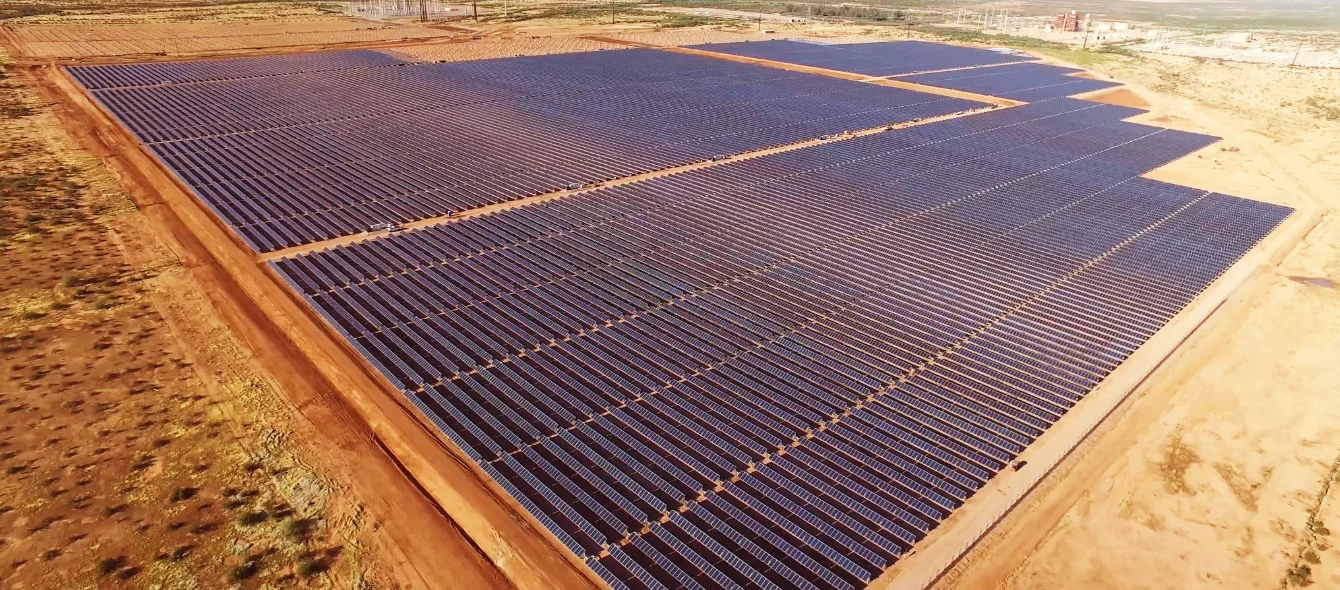
UK-based renewable energy solutions company Xlinks is planning a new power generation facility powered entirely by solar and wind energy combined with a battery storage system. The solar and wind farm is to be located in Morocco's Guelmim Oued Noun region, which is rich in renewable energy.
© wadstock, shutterstock
Long-distance transport is not usually good news when it comes to a standard consumer product, which may have clocked up a surprising number of carbon miles before arriving on the shop shelf. Electricity, however, is different, as it can be generated cleanly and travel along wires for hundreds, if not thousands, of kilometres, thanks to long-distance High-Voltage Direct Current (HVDC) cables.
Clean power can be brought from countries rich in renewable energy resources to areas of high demand such as Europe, creating energy transition employment in both.
Moreover, this prospect would allow two countries with inversely-related weather systems to be connected, strengthening the security of supply provided by renewable energy sources with variable, but overlapping generation profiles.
Morocco-UK Power Project
This is one of the central ideas behind the Morocco-UK Power Project, which envisages subsea HVDC cables running an enormous 3,800 km from Morocco to the UK, further even than the longest existing overland HVDC cables. Four cables would make up twin 1.8 GW interconnectors for a total of 3.6 GW capacity.
The longest subsea electricity interconnector built to date is the 724 km, €1.6 billion North Sea Link, which stared operating in October. It is designed to bring hydro-electrically-generated power from Norway to the UK and send surplus UK wind power back in the other direction.
But there are no real technical limitations to how long an HVDC cable can be, although power losses do rise over longer distances.
HVDC systems lose about 3% of the power transmitted for each 1,000 km. In addition, they lose about 0.7-1.0% of the power in the converters placed at each end to convert the power from alternating current (AC) to direct current (DC) and back again for use in national electricity grids.
Nonetheless, HVDC systems have the capacity to transmit large amounts of power over long distances economically, and, because of the buffer created by the converters, can connect two electricity systems which are not synchronised, while at the same time helping to stabilise the two linked grids individually.
The proposed cable route would follow shallow waters, hugging the coastline of northern Morocco, Portugal, and northern Spain before crossing the Bay of Biscay to land eventually in the south of England.
XLinks, the company behind the Morocco-UK Power Project, will use voltage source converters and has an agreement with the UK’s National Grid ESO for two 1.8 GW connections to the UK grid at Alverdiscott in Devon.
The interconnector would be point-to-point, dedicated solely to supplying the UK.
Powering up the cable
Big cables need a big power source. The cables will be powered by a combination of wind and solar, which would benefit both from Morocco’s high levels of solar radiation and trade winds, which blow very consistently throughout the year. In total, XLinks plans 10.5 GW of renewable energy capacity, which is almost five times the amount of wind and solar power installed in Morocco at the end of 2020.
The proposed wind and solar farm will cover 1,500 km2 in Morocco’s Guelmim Oued Noun region. Of this, 200 km2 will be devoted to solar panels. These are expected, from January to March, to generate five times as much electricity as if the panels were sited in the UK.
Morocco lies south of Portugal, which until very recently held the record for the cheapest solar power bid in the world, so there are good reasons to think a large-scale development will deliver very low cost power. Moreover, Lazard Bank’s most recent Levelised Cost of Energy Analysis, published in October, shows that the Morocco-UK Power Project would be drawing on what are now unequivocally the two cheapest sources of electricity generation — onshore wind and solar.
The generating capacity would be backed by a huge 20GWh/5GW battery storage facility, primarily made up of lithium-ion batteries. This would smooth the solar and wind power generation and allow the provision of power for more than 20 hours a day, making efficient use of the subsea cable capacity.
The whole project could be up and running by the end of the decade, according to the project developers, in time to make a significant contribution to the UK’s 2030 climate targets. And, if realised, it can be fairly sure of holding the title of world’s longest subsea interconnector for some time.